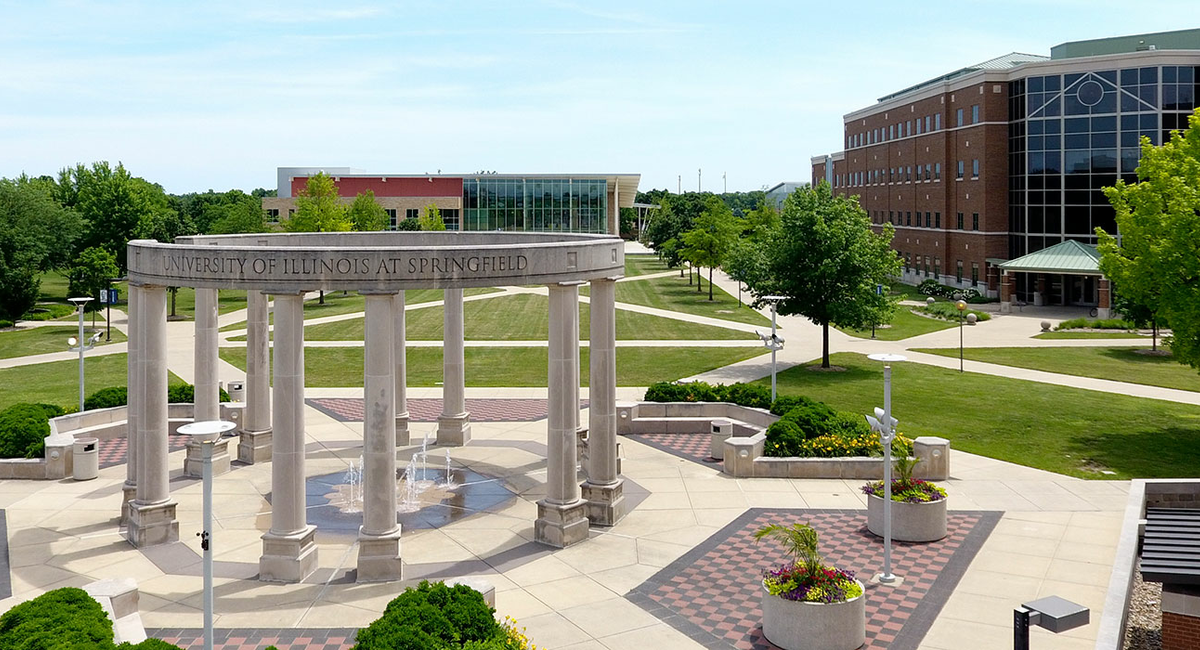
Everything you wanted to know about Ranked-Choice Voting (and maybe somethings you didn’t)
In recent months, there has been increased news coverage of ranked-choice voting (RCV) in Illinois. Two events help explain this coverage. First, the City of Evanston became the first city in Illinois to adopt RCV for all voters in the city (as opposed to only for those deployed as part of the military) following a referendum where approximately 82% of voters supported RCV. The second event is the Chicago city elections, particularly the mayoral election. While perhaps not driving news coverage, it’s also worth noting that multiple bills related to the adoption of RCV have been filed in the Illinois General Assembly.
At this point, you may be asking “what in the world is ranked-choice voting?” There are several variations, but generally speaking, ranked-choice voting (RCV) is an electoral system where voters rank candidates in order of preference, rather than just choosing a single candidate. After the first-choice votes are counted, if no candidate has received a majority of the votes, the candidate with the fewest votes is eliminated, and their votes are redistributed to the remaining candidates according to voters' second choices. This process is repeated until one candidate receives a majority.
RCV is not a new electoral system by any means. It’s been utilized in a number of places in the United States since around 1915. RCV is used in city elections in New York City and several other cities and towns, both large and small. It’s also used at the state level in Maine for federal elections, Alaska (paired with a type of non-partisan “open” primary) for all state and federal elections, and elsewhere for presidential primaries. Internationally, versions of it are used widely in Australia, Ireland, Malta, and elsewhere. And notably, right here at home in Illinois, a young senator who went by the name Barry Obama proposed RCV in Illinois way back in 2002. While the eventual President Obama’s efforts failed, legislation related to RCV continues to regularly be filed in the Illinois General Assembly.
With that introduction out of the way, I want to focus the rest of this write up on two things: the arguments made for and against RCV and, because I am an academic researcher after all, what existing research tells us about RCV. The goal of this write up is to provide information, not take a position on the topic.
Arguments for Ranked-Choice Voting tend to focus on:
Increases voter turnout: According to proponents, RCV encourages more voter participation by allowing voters to express their preferences more freely without the fear of "wasting" their vote through voting for a candidate less likely to win. The argument goes, voters can utilize the ranking system to benefit their preferred candidate with their first choice and a candidate who may be more likely to win that they prefer less (though more than a third candidate) as their second choice.
Reduces negative campaigning: Supporters of RCV argue candidates have an incentive to appeal to a wider range of voters, including those who support their opponents. Negative campaigning can backfire, as it may alienate voters who might otherwise rank the candidate higher or as a second choice.
Increases the election of “moderate” candidates: Proponents of RCV argue it may lead to the election of more moderate candidates because it incentivizes candidates to appeal to a broader range of voters beyond their base of support. Candidates who take extreme positions risk alienating voters who might otherwise rank them second or third, similar to campaign tone arguments.
Promotes more diverse representation: RCV may help promote the election of candidates who represent minority interests or underrepresented groups, who may be seen as less likely to win than candidates from “traditional” groups, as voters can express support for these candidates without fear of "wasting" their vote or becoming a “spoiler” by “taking” a vote from another candidate who may be seen as more likely to win.
Saves money: Supporters argue that since RCV would eliminate runoff elections in areas that they are utilized instead of a multi-round system, this would save localities a significant amount of money.
Arguments against Ranked-Choice Voting focus on:
Confusing for voters: According to opponents, RCV can be complex, and voters may not understand how to rank their choices. This can lead to a high number of spoiled ballots or issues with voting.
May not accurately reflect a real majority: In RCV elections, some ballots may become “exhausted.” Ballot exhaustion refers to the situation in RCV where a voter's ballot no longer counts towards the final result of the election because all of their ranked candidates have been eliminated, lowering the actual support for a candidate below a majority of voters.
Expensive to implement: Opponents argue that implementing RCV requires changes to election infrastructure and voter education programs. This can be costly and time-consuming, especially for jurisdictions that are already struggling to fund elections.
Alright, so what do we know?
Research shows that RCV may reduce the drop in voter participation that typically occurs between the first rounds and runoffs in local elections, compared to the current system. This turnout benefit is more pronounced among younger voters. Moreover, politicians seem to invest more effort in conducting voter outreach under RCV compared to the current system. These efforts may explain why RCV has a greater impact on younger voters, who are typically harder to turn out. Research focused on local elections in New York City supports claims that RCV improves turnout, but turnout appears to have decreased in Alaska following the adoption of RCV. So, context may matter here, and more work is needed to really understand the impact of RCV on turnout.
Studies that look at the impact of RCV on campaign tone find that according to candidates, voters, and objective analysis campaigns are more positive under RCV compared to current systems. Further, research suggests that RCV can spur political opponents to campaign together in the hope of convincing supporters of their opponents to rank them second. This is a stark contrast to our current elections. Examples of such an impact on tone can be seen in New York City, Alaska, San Francisco, Maine, Virginia, and elsewhere. But, other research finds that in some RCV races campaigning actually becomes more negative (at least in online settings). So, in total the evidence suggests RCV improves campaign tone, but there may be important exceptions we need to understand better.
When it comes to whether RCV produces more moderate candidates, initial research suggests this may be the case, which is supported by case specific analysis of Alaska, and a survey experiment in the 2016 U.S. Presidential election. In fact, research suggests RCV was adopted in Maine as part of an attempt to preserve Maine’s reputation for moderate politicians. While only an N of one, following Maine’s adoption of RCV, Jared Golden, a moderate Democrat, initially won his congressional race in Maine over a more ideological Republican opponent, due to vote transfers from third-party candidates. Other examples of moderates benefiting from RCV may be the 2022 elections for Senator Lisa Murkowki and Congresswoman Mary Peltola in Alaska.
Moving on to claims that RCV will improve the electoral performance of groups who typically perform worse in our current system, researchers find that RCV increases the proportion of elected officials who are racial minorities, women, women minorities, and third-party/independent candidates. Relatedly, research into the repeal of RCV in the initial era of it’s use suggest repeal efforts were driven by racism, sexism, and a desire to reverse successes of smaller political parties which suggests, at least previously, that these arguments and research findings may have some merit.
Researchers have extensively investigated whether voters are confused by RCV. Research finds widespread understanding of RCV after educational campaigns. When we look at specific recent examples of RCV, 85% of Alaskans and 95% of New Yorkers surveyed after voting in RCV elections thought RCV was simple and easy to understand. These results were consistent across voters of different education levels and group backgrounds. In total then, it seems like overwhelming majorities of voters from all backgrounds understand RCV. However, what remains to understand is about the information burdens RCV places on voters and how RCV impacts their decision-making process, as those may be part of the confusion story.
What about the issue of ballot exhaustion? Experts expect that about 12% of ballots will be exhausted in a RCV election based on simulated RCV elections. This seems to be close on average, in the 2022 Alaska general election for their congressional seat, about 6% of ballots were exhausted. In the 2021 New York City Democratic Mayoral Primary, 15 % were exhausted. So, ballot exhaustion is a genuine problem, but the size of the problem varies depending on the election, we don’t fully understand what explains this variation yet, and voters not filling out their ballots completely is a problem that also exists in our current system.
Lastly, whether RCV elections cost more or less is hard to say. The City of Chicago has earmarked $30 million for their 2023 runoff elections, which matches the $30 million set aside for the first-round vote. This is in line with what the city spent on the 2019 runoff. Would RCV save some of that taxpayer money? Simply put, we don’t know. There’s not much research on this question. One number we do have is that in the 2021 New York City election, at least $15 million was spent on the switch to RCV due in particular to an extensive voter education campaign. If Chicago can keep their costs at or lower than a city three times their size, then it would potentially save taxpayers money (I can already sense some of your skepticism at that “if”).
So, in total, research seems to suggest that RCV:
- Sometimes increases voter turnout, and sometimes doesn’t
- Decreases negative campaigning (probably…)
- Produces more moderate candidates (which may be related to voter turnout and campaign tone)
- Produces more diverse (defined in multiple ways) elected officials
- Results in some ballots not being utilized in final calculations due to being “exhausted.”
- And does not appear to confuse voters (though we need to know more about information burdens and decision-making strategies)
If you find this write up interesting, keep an eye out on this space for an initial dive into statewide Illinois voter public opinion data on RCV and other alternative electoral systems from myself and Dr. Nicholas Waterbury. Also, the UIS Center for State Policy and Leadership will be hosting a webinar discussing RCV further on April 19th.
______________________________________

AJ Simmons is the Research Director of the Center for State Policy and Leadership at UIS. He holds a PhD from the School of Politics and Global Studies at Arizona State University.


